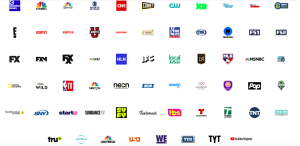With the recent addition of two of YouTube’s subscription-based add-ons, YouTube Premium and YouTube TV, YouTube has the potential of becoming a dominant force in the media and entertainment industry.

YouTube TV enables viewers to live stream major television networks, like CNN or ABC to from their computer or television.
YouTube Premium allows viewers to download television shows, songs, and movies for offline use. In addition, the ability to listen to music when the YouTube app is closed or the screen is shut off. The ad wall would also be removed allowing subscribers to watch videos or listen to music without interruption.
With both platforms, viewers have access to on-demand videos to access to a large selection of original TV shows and movies produced exclusively by YouTube. Combined with the rise of these cheaper on-demand entertainment platforms, it is no wonder why cable companies are starting to lose their subscribers.
Recently, a study conducted by the Leichtman Research Group noted that in 2016, cable companies in the U.S lost 795,000 subscribers. In 2017, it nearly doubled to a decline of 1.4 million subscribers.
The following year, in 2018, 2.8 million people quit their subscription to cable companies.
Although the decline of subscribers can be contributed to numerous factors, YouTube is clearly a threat to cable companies.
Previously, if someone wanted to have a live television channel like A&E they would need to choose a cable provider, select from numerous pricey package deals with select channels and sign a two-year contract to pay a fixed amount of money in exchange for live television networks.

Youtube TV users can pay a flat fee of $40 a month to gain access to over 60 live channels of live sports, news. It also includes access to local television stations, like 6abc or CBS 3. It can be split over six users. It can be accessed from anywhere to be watched later. Subscribers can cancel anytime and do not have to select from packages. The cloud DVR feature allows subscribers to access the content anywhere in the world. Set-up time is practically non-existent.

While YouTube has offered brilliant options, the concept has not caught on yet to consumers who seem to be comfortable with their Netflix or Hulu subscription.
Nelson Marin, junior graphic design major, said that he use to use Youtube Premium for a television show but stopped paying for it after the show ended. “I used it to watch a show on YouTube but when it stopped,” Marin said. “I stopped paying for [Youtube Premium].”
Ixchele Ortiz, freshman education major, noted that she didn’t see a point in paying for the Youtube Premium as she is getting the content for free anyway.
“I don’t see the purpose in paying for YouTube Red,” Ortiz said. “When you can you can access YouTube for free.”
Maria Merino, junior education major, noted that she and her family never pay for YouTube Premium. She said that they watch the exclusive TV show and then canceled the free three-month subscription after the show is over.
“My family would use the three months free on YouTube [Premium] to watch a show,” Merino said.” And when it was over we would just cancel our account.”


